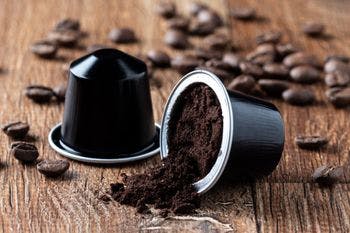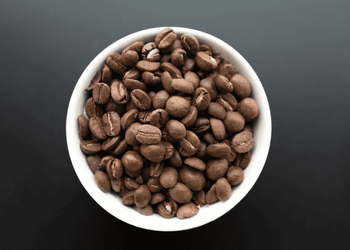
Dark Roast Vs Light Roast Coffee: Key Differences

As the steam rises from your freshly brewed cup of joe, have you ever stopped to ponder the roast level of the beans that went into it? And what exactly does the roast level mean? How does it affect the flavor and overall experience of your daily caffeine fix?
Light roast, medium roast, or dark roast - each brings its unique flavor profile to the table. But what exactly sets these roasts apart? Is one inherently better than the others? Fear not, dear coffee lovers, for we are here to explore the mysterious world of roast levels and help you determine which one suits your taste buds best.
Whether you're a seasoned coffee connoisseur or just getting started on your caffeine journey, this is a must-read for anyone looking to deepen their understanding and appreciation of the beloved bean. So, grab a mug of your favorite black gold, and let's dive in to learn more about the world of coffee roasts!
Light roast vs. medium roast vs. dark roast
When it comes to coffee, roasts are like personalities: light, medium, and dark. Light roast coffee is the life of the party - bright, energetic, and full of flavor.
Medium roast coffee is the laid-back, go-with-the-flow type. And dark roast coffee is the strong, mysterious one - bold and full of depth. So which one would you fall for? Let’s know more about them so you can choose wisely!
Light roast

Light roast coffee is known for its light brown color and dry surface. It is roasted at a temperature between 356-401°F, resulting in a coffee that is light in body and has a bright, delicate flavor. Unlike its darker counterparts, light roast coffee has a higher acidity and a more subtle aroma.
The beans are usually roasted until the first crack, which is the point at which the coffee beans make a popping sound as they expand and release their oils. This allows for a more defined flavor profile, with the unique characteristics of the bean's origin still shining through.
If you're a fan of a more vibrant, lively cup of coffee, a light roast might be the perfect choice for you. Just make sure to brew it at the right temperature and with the right technique to bring out all of its nuanced flavors.
Medium roast

If you're a fan of coffee but find light roast a bit too bright and dark roast a bit too intense, medium roast might just be the perfect choice for you. Medium roast coffee is roasted at a slightly higher temperature of 410-428°F and for a longer period than light roast, resulting in a coffee with a richer, more balanced flavor.
One of the key characteristics of medium-roast coffee is the sound it makes during the roasting process. As the beans are heated, they will begin to make a cracking sound, known as the "first crack."
For medium-roast coffee, the roasting process continues beyond the first crack, allowing the beans to develop a deeper, more complex flavor profile. In addition to its rich, balanced flavor, medium roast coffee is also known for its smooth, velvety texture.
Whether you prefer your coffee black or with a splash of milk, a medium roast is a great choice for those who want a satisfying, full-bodied cup of coffee without the intense, bold flavors of a dark roast. So the next time you're in the mood for something a little more mellow, give medium roast coffee a try.
Dark roast

Dark roast coffee is a type of coffee that has been roasted to a high degree, resulting in a bold and intense flavor profile. The beans are roasted until they reach the "second crack," a point in the roasting process where the beans make a distinctive cracking sound due to the expansion of their oils.
The second crack occurs later in the roasting process and is characterized by a more rapid series of cracks.
One of the key characteristics of a dark roast is its temperature. The beans are roasted at a higher temperature than those of a medium or light roast, typically 430-460°F, which gives them a dark color and a more pronounced flavor.
The high heat of the roasting process also causes the beans to lose much of their original flavor characteristics, resulting in a coffee that tastes smoky, bittersweet, and sometimes even slightly burnt.
Aside from its flavor, dark roast coffee is known for its full-bodied, velvety texture, which can be attributed to the high levels of oil present on the surface of the beans.
The oils give the coffee a smooth, rich mouthfeel and contribute to its overall depth of flavor. Overall, dark roast coffee is a bold and flavorful option that is perfect for those who enjoy a more intense coffee experience.
Flavors of different coffee roasts
As any coffee connoisseur knows, the flavor of a coffee can vary significantly depending on how it is roasted. The roasting process plays a major role in determining the final flavor profile of a coffee, and different roasting techniques can bring out different notes and characteristics in the beans.
Light roast coffee is often described as having a sweet, floral, or fruity flavor, with a slightly acidic finish. The beans retain much of their original flavor and aroma due to the shorter roast time, and the coffee has a fresh, lively taste.
The flavor of medium roast coffee is more balanced and nuanced with a smooth, well-rounded taste. Medium roast coffee is known to have a "toasty" or "nutty" flavor, with notes of chocolate or caramel. The roast process brings out the natural sweetness of the beans and rounds some of the acidity, resulting in a flavor that is both rich and smooth.
Dark roast coffee is often described as having a smoky, roasted flavor, with a pronounced bitterness and a slightly sweet finish. The extended roast time and high heat bring out the oils in the beans and give the coffee a bold, full-bodied flavor. Some people taste notes of chocolate or caramel in dark roast coffee, while others detect more savory flavors like leather or tobacco.
Pros and cons of different roasting
Let's weigh the pros and cons of light, medium, and dark roast coffee to help you find the perfect roast for you!
Pros of light roast coffee:
- Retains more of the original flavor of the beans
- Has a bright, lively flavor with a slight acidity
- Lighter body and less bitterness
Cons of light roast coffee:
- May not have the full-bodied flavor of darker roasts
- May not stand up as well to milk or cream
Pros of medium roast coffee:
- Has a balanced, well-rounded flavor
- Smooth, nutty taste with notes of chocolate or caramel
- Good for a wide variety of brewing methods
Cons of medium roast coffee:
- May not have the bright, acidic flavor of light-roast coffee
- May not have the intense, smoky flavor of dark roast coffee
Pros of dark roast coffee:
- Has a bold, full-bodied flavor
- Smooth, velvety texture due to high levels of oil on the beans
- Good for espresso-based drinks
Cons of dark roast coffee:
- May have a bitter or burnt flavor if not roasted correctly
- May not have the delicate, nuanced flavor of lighter roasts
- May not be as versatile with brewing methods due to its intense flavor.
Finding your perfect roast
So, there you have it, folks! The great coffee roast debate has been put to bed. Or has it just been stirred up? After all, there's no denying that light roast, medium roast, and dark roast coffee each have their unique charm.
Light roast is like the life of the party - vibrant, energetic, and full of zest. Medium roast is the dependable one- not too light, not too dark, just the right balance of flavor and character. And then there's a dark roast, the mysterious rebel of the coffee world. Bold, strong-willed, and with a hint of an edge.
So which one should you pick? The answer is simple: all of them. In the end, it's all about personal preference. So go ahead and mix it up, try a little of everything, and discover which roast brings out your inner barista.

I am a coffee aficionado based in Seattle. I have devoted my passion and expertise to perfecting the art of home coffee brewing. I became known for my exquisite pour-over and espresso creations. I source coffee beans from local roasters and explores ...



